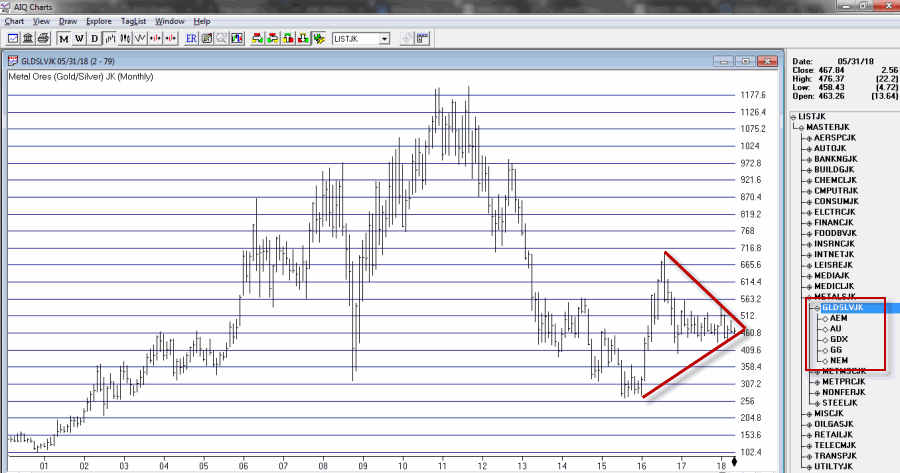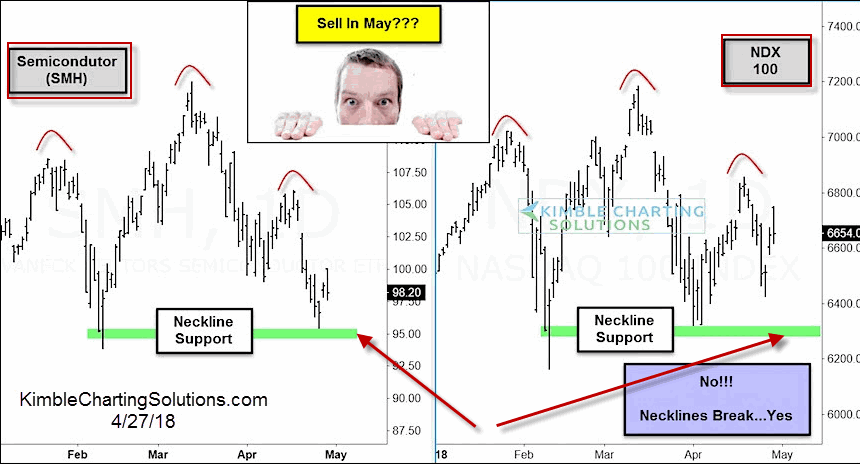I used to be a pretty fun guy. No, seriously. Then, I don’t know if it was a function of age (at the very least it was clearly not a function of maturity) or what but I became less “fun” to be around over the years. So I am not sure if it is coincidence or not, but as a technical analyst my “taste” in chart patterns has changed also.
I used to be a “strong trend line”, “continuation pattern” kind of guy. Like I said, fun. Now? My favorite seems to be the most boring thing around – give me something that has gone nowhere (example to follow).
This was reaffirmed somewhat last year when I attended a conference and listened to esteemed Charles Kirkpatrick list stock after stock that fit the mold. So what am I talking about? The best example I have found right now is uranium. No, seriously.
Figure 1 and 2 display monthly charts for ticker URA – the Global X Uranium ETF. This ETF invests in companies involved in the uranium business.  Figure 1 – URA Monthly; 2011-2018 (Courtesy ProfitSource by HUBB)
Figure 1 – URA Monthly; 2011-2018 (Courtesy ProfitSource by HUBB)
 Figure 2 – URA Monthly; 2014-2018 (Courtesy ProfitSource by HUBB)
Figure 2 – URA Monthly; 2014-2018 (Courtesy ProfitSource by HUBB)
A couple things to note. I know absolutely nothing about the fundamentals of the uranium business. Nor quite frankly do I really want to. Truth be told it would probably just confuse me.
But one thing I have seen – estimating here – roughly a bazillion times is a security that falls hard and then gets locked into a sideways range for what seems like forever. In many, many cases price eventually breaks out significantly to the upside out of that range. I most certainly cannot guarantee that that will happen with URA. In fact, please understand that I am not “recommending” URA. I am simply pointing out that it “fits the profile.”
It plummeted from a high of $133+ to about $11 a share. It first dropped to its current price of $13.37 in August of 2015. In other words, it s been “going nowhere” for almost 3 years. This will not last forever.
What To Do (if anything)
First off, again, I am not recommending URA, simply pointing out its present status and noting that the pattern it has formed often proves to be bullish longer-term. So the choices are:
a. Forget I mentioned it
b. Buy now with a stop under $11.31 (roughly -15.5% of risk)
c. Wait for a further dip before buying
d. Wait for a breakout to the upside before buying
Summary
Do NOT go out and buy URA because of what you have read here. Whether or not this one example security works out or not is not actually the point. But maybe keep an eye on it as history suggests that this pattern has a way of working out to the upside. And more importantly, keep an eye open for other “going nowhere” situations, as they often are followed by meaningful price moves
Jay Kaeppel
Disclaimer: The data presented herein were obtained from various third-party sources. While I believe the data to be reliable, no representation is made as to, and no responsibility, warranty or liability is accepted for the accuracy or completeness of such information. The information, opinions and ideas expressed herein are for informational and educational purposes only and do not constitute and should not be construed as investment advice, an advertisement or offering of investment advisory services, or an offer to sell or a solicitation to buy any security.









